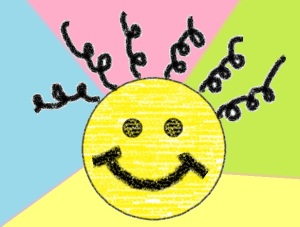I hope I didn’t leave you all in a frenzy the other day when I warned of an unknown pandemic sweeping across the western world. Because that would be ironic. Why, you ask? Well, first off, let’s define the meaning of the word pandemic. According to Merriam Webster’s Medical Dictionary:
A pandemic is an epidemic “occurring over a wide geographic area and affecting an exceptionally high proportion of the population.”
I’m sure you haven’t heard of any recent pandemics to be weary of. Sure, there was H1N1 and Avian Flu and even SARS. But, a pandemic? We would’ve heard about on the news! So what is this pandemic I speak of? Well, it won’t surprise you, I hope. And if it does, don’t stress. Because I’m talking about…
Stress
Stress is a concept that bears more than its fair share of meanings and connotations, having evolved into a metaphor for our haphazard modern lifestyles. The word has its origins in biology. Coined by the endocrinologist Hans Hugo Bruno Selye, the word stress began to take form during his tenure at McGill University in Montreal (my alma mater!) in 1936. Countless experiments on mice and hours of human observation later, Selye discovered “stress.” (You’d think it was just a self-diagnosis, but, to be fair, he did have 40 lab assistants.) He had found that injection of irritating substances (in mice) and observations of people suffering from different diseases consistently produced a swelling of the adrenal cortex (think: adrenaline), atrophy of the thymus (in the neck below the thyroid), and gastric and duodenal (a.k.a. the first part of the small intestine) ulcers. And with that, stress was born. Selye divided stress into two components: the general set of responses (a.k.a. the general adaptation syndrome [GAS]) and the development of a pathological state from ongoing, unrelieved stress. He claimed our responses to stress are the same whether the stressors are negative – distress – or positive – eustress.
Seventy-four years after Selye stepped foot on the McGill campus (hmmm…wondering which rez he lived in…), his legacy lives on in every one of us. Literally. We all live in constant vacillation between eustress and distress, the latter of which is the type that causes anxiety and depression. Physiologists have provided the 21st century with a succinct definition of stress:
Stress is the physical reaction to a real or imagined stressor.
Those stressors can be acute – i.e. stress in the short-term (a.k.a. fight-or-flight response), or chronic – i.e. stress in the long-term. It’s the body’s way of saying: Houston, we have a problem, a relic from days of running from or fighting attacking wild animals.
Nowadays, however, stress has transformed into a sort of catch-all for our perception of the challenges that life chucks at us, be it real or imagined. And, boy are we stressed! We wake up early. We go to sleep late. We run from commitment to commitment like headless chickens hoping we don’t end up on a dinner plate. We have deadlines and excessive responsibilities, and, all the while, we’ve got to keep our cool and cope. Guess what? These are acute stressors.
It’s alarming.
There are people who say they thrive on stress. In fact, we all do at times. That’s eustress. As for the rest of the time, with each acute stressor, we cast our tired bodies into another round of adrenaline. We end our days drained, body, mind, and soul. For most people, stress is chronic. They just don’t realize it. They’ve become accustomed to headaches and stomachaches and mood swings. Fun? Sure, if you’re a masochist. Not only are we suffering from stress like there’s no tomorrow, we’re killing ourselves in the process.
So, just to break down last week’s breaking news:
An unidentified pandemicStress is mercilessly wreaking havoc across much of the western world. The source of the pandemicis yet to behas been confirmed.However,medical officialsbelieveare certain that it originated inlarge mammalspeoplehibernating in a caveworking excessively long hours in thenortheastern United Statesentire western world.- The enumerated symptoms of the pandemic entail the very real and very wide spectrum of medical conditions that acute and chronic stress can cause.
- No, you’re right. The U.S. has not issued travel warnings. But for all intents and purposes, shouldn’t stress be right up their with malaria? Workaholism is contagious.
My take-home message for you is this: Don’t stress. Perhaps easier said than done, considering the fact that Selye proved that stress is indeed a physiological response. We can’t entirely avoid it because of the interplay of the body and the brain. Nevertheless, each of us can play a larger role in preventing its lethal consequences. Give me something concrete! you’re saying. Okay. First, learn to spot signs of stress. Second, figure out your triggers – are they in your head or are they real? Then, when stress strikes, just breathe – don’t let that beating heart and those sweaty palms take control – and respond calmly and actively to your stressor. Finally, learn techniques to prevent stress in the first place. All the basics: relax, exercise, eat right, sleep well, don’t smoke, don’t drink too much coffee or alcohol. It’s become prosaic, but there’s a reason why yoga has become such an addiction in the west.
And learn to smile in the face of stress. Because no matter the stressor, bear in mind that this too shall pass.
Have a distressless and eustressful day!


